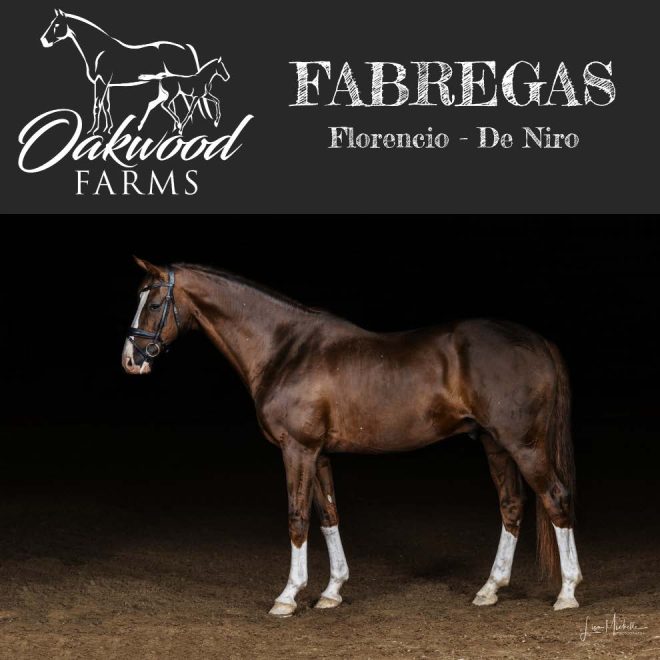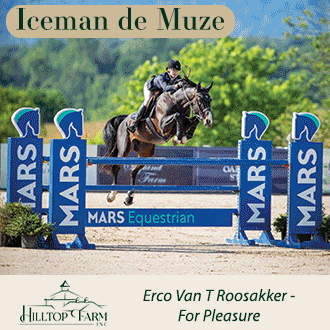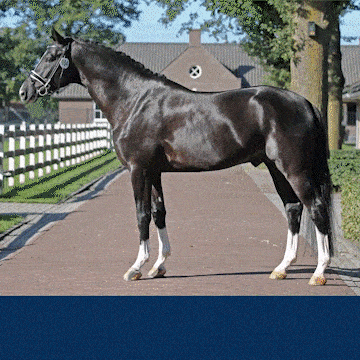Assess Your Goals
The breeder must be relentlessly realistic in approach, assessment, and analysis of both the mare and her stallion options. The answers to the following questions will help narrow down your stallion choices.
- For what discipline are you breeding; hunters, dressage, jumpers, eventing or an all-around athlete?
- Are you breeding for yourself or for sale? If breeding for sale, it might be easier to sell offspring from a well-known stallion and consider traits that will be important to your target market.
- Are you breeding for the amateur or professional market? Amateur riders and professional riders often want different qualities in a horse. AA riders frequently consider a quiet and forgiving temperament a top priority, while a professional may want a horse with a bit more energy and sensitivity.
Objectively Critique Your Mare: We all love our mares and think they are “perfect”. However, every mare has some qualities that can be improved upon. It is so important to separate your emotional attachment to your mare and critique her objectively.
Start by reviewing all the data available on the mare.
- Studbook inspection Scores
- Mare Performance Test Scores – if applicable
- In-hand show scoresheets
- Video
- Pictures
The registry inspectors review thousands of horses and are the experts. They will give you an honest and objective opinion of your mare. Her scores will point out areas that can use improvement. If your mare has been shown at in-hand classes, review your score sheets. Review any available video from these events and compare them to the score sheet in front of you. Sometimes you might disagree with a judges/ inspectors comments, but as you watch the video of the event you begin to see what they saw. It can be difficult to assess your mare “live” so get good conformation shots (front, side, back) of her that you can analyze and critique.
From this analysis, you can then make two equally important lists: qualities you want to retain from your mare and the qualities you would like to improve. Ask yourself what conformation points are weak, which gait can use improvement, and if there are temperament issues to retain or to improve. Once you have identified areas you wish to retain and to improve, rank them in order of importance to you. No one stallion can “fix” every item on a wish list.
It can also be helpful to get a second opinion of your mare. Ask your trainer, a respected breeder, or stallion owner for their opinions and suggestions.
Learn Your Mare’s Bloodlines
Genetics determine a lot; therefore it is important to know your mare’s bloodlines. Genetics isn’t just the dam and sire, but also the influence of the second, third, and past generations of your mare’s pedigree. These past generations can greatly influence the resulting foal and some lines are known to be very prepotent in future generations. If your mare has been bred before, make efforts to track down information on that foal, and what that foal is doing now. Check in with the current owner and see how temperament is shaping up, training is progressing, as well as conformation.
Lastly, knowing your mare’s pedigree will help you prevent inbreeding and too much concentration of a certain bloodline in the resulting foal. There are many great bloodlines to choose from. If you are a novice breeder, “line breeding” (using stallions closely related to the mare) would not be where you want to start.
Determine what her bloodlines represent in terms of discipline success, and how that relates to the discipline you are breeding for. A mare that has predominately dressage bloodlines and has shown in the hunters at 3 feet will be hard-pressed to produce a showjumper or Derby horse, no matter which stallion is used. On the other hand, many schools of thought discuss the possible benefits to adding a jumping line to a dressage bred horse.
Determine Your Mare’s Warmblood Fragile Foal Syndrome (WFFS) Status
WFFS is an inherited connective tissue defect characterized by lax and hyperextensible joints and abnormally thin, fragile skin and mucous membranes causing extensive lesions throughout the body. This is a lethal condition. The AHS recommends that members test all mares and stallions to determine whether these animals are carriers of the WFFS gene. It is strongly recommended breeders should NOT breed carrier mares to carrier stallions. The status of your mare can be determined though a DNA hair sample test. The AHS office can assist you in getting your mare tested.
Analyze Potential Stallions
Now that you have studied your mare’s conformation, gaits, and pedigree, it is time to start looking at stallions. First, determine which stallions are approved and activated with the AHS using the annual AHS Breeders Guide or on the AHS or ARS website., then use your discipline and pedigree criteria to further narrow your list.
If you are considering a specific cross, use the internet for research and look for pictures/videos etc. worldwide to see what this stallion has produced, looking closely at offspring out of mares that have a similar pedigree to your mare. As you view these pictures or videos, try to identify themes that might indicate prepotency for specific attributes.
Once you have narrowed down your choices some questions to ask would be:
- Has the stallion been successful in sport himself? If not, was his sire successful?
- How have his offspring done in competition?
- What is the longevity of the stallion and his offspring in competition?
Evaluate the stallion’s licensing scores and Stallion Performance Test results. If he is a young stallion these scores, along with Young Horse competition results, may be the only data available as he might not have any offspring yet in competition.
Dialog with stallion owners is important. There is no substitute for the old-fashioned telephone call, as not everything can be revealed via email. Call them directly and speak objectively about their stallion and your mare. Ask them, “What are the top three traits their stallion consistently passes on?” Ask for conformation shots and video of their stallion free and under saddle if you are unable to see him in person. Discuss with them what qualities you need to improve upon your mare, and if their stallion is a good candidate to help achieve those goals.
There is a trend sometimes to use the “hot new stallion”. However, if this will be your mare’s first foal you do not know what she can produce. In this scenario it might be wise to use an older, established stallion with known traits that he reliably passes on. If your mare is an established broodmare it can be exciting to use a young stallion with a strong pedigree that compliments your mare.
Fresh or Frozen?
With all the veterinary reproductive technology these days, mare owners have access to so many stallions via both fresh and frozen semen. However, many factors should be taken into consideration when deciding between breeding with fresh (shipped, chilled) or frozen semen. Do you have access to an experienced reproduction veterinarian? Frozen semen breeding requires much stricter monitoring of the mare’s cycle. Take into consideration your mare’s health, age and past breeding history. It can be tempting to use frozen semen as breeding doses are frequently less expensive. However, these often do not have live foal guarantees, and veterinary fees can be significantly higher. To further understand the cost comparisons between using fresh or frozen semen please read the article “Working with the Stallion Manager”
Resources Available to Breeders
The internet is a wonderful tool. Search your mare’s pedigree, potential bloodline combinations, stallion videos, stallion offspring videos, etc. There are many chat rooms that can offer information and a vast array of personal opinions and experiences. Just remember many rumors and misconceptions are also spread in the chat rooms. Try to stick with factual discussions versus the opinions of an individual.
Other valuable resources include:
- Online Resource List for Hanoverian Breeders on the AHS website. This list of current links is an excellent starting point for the beginning of your internet research.
- Hannoveraner Jahrbuche Hengste is the annually published Hanoverian Stallion Yearbook. This book is a wealth of information on individual stallions including performance test results, lists of licensed stallion sons and offspring successful in sport; as well as statistics of the basic traits they pass (conformation, gaits and jumping ability). Copies may be purchased through the Hanoverian Verband online, and limited copies are available for purchase through the AHS office beginning in February of each year.
- AHS Breeders Course and the Hannoveraner Verband Breeders Course. During these courses there are extensive lectures on the history of the Hanoverian, discussions on bloodlines, analysis of conformation and gaits, and many visits to breeding farms and breed shows. Both new and very experienced breeders will walk away from these educational programs with a much deeper understanding of the art and science of breeding the Hanoverian horse.
- There are also a few books that discuss Warmblood stallions and bloodlines. Two examples with good information, bloodline discussions and pictures include the “The Making of the Modern Warmblood. From Gotthard to Gribaldi” by Christopher Hector and “Selected Sires of Germany” by Bernd Eylers.






